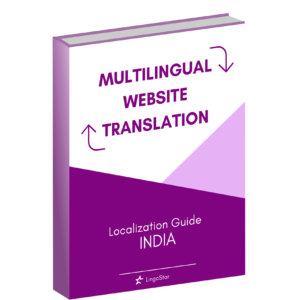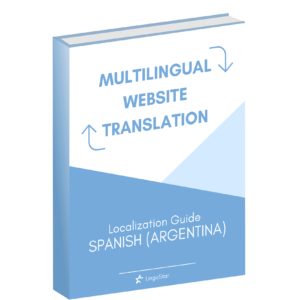
Dec 17, 2023 | Blog, Holidays, Traditions, Translation, Worldwide
Savouring Central European Christmas: a cultural and culinary expedition ‘Tis the season! As the holiday season spirit embraces us, join the Lingo Star team – a diverse group deeply rooted in the traditions of Slovakia, Italy, the Czech Republic and Germany. Unwrap the festive tapestry of these rich cultures. Savour not only the culinary delights but also the universal language of shared customs that bind us together during this joyous season. Slovakia: Eastern European elegance In Slovakia, Christmas is celebrated on December 24th and is marked by unique traditions that add magic to the season. The first meal of the day, Christmas Eve dinner, holds a special place in Slovak traditions. Legend has it that if you refrain from eating all day, you may be rewarded with a glimpse of a golden pig! Christmas traditions and dishes vary from region to region and family to family. Wafers with honey and garlic kick off the feast, followed by a main course of fish, mushroom, or cabbage soup. Some families add prunes to cabbage soup for a unique and delicious twist. Fish, especially carp, with traditional potato salad, is a staple of the Christmas meal. No Slovak Christmas is complete without an array of cookies and cakes adorning homes. Some families go the extra mile and bake 8-10 different types of cookies every year. On Christmas Eve, Baby Jesus, or Ježiško in Slovak, takes centre stage, bringing presents for children under the twinkling tree. To add to the festivities, Slovakia also celebrates St. Nicholas’ Day on December 6th. Children eagerly place their shoes by the door or window in anticipation of...

Nov 25, 2022 | Blog, Promotions, Traditions
Black Friday’s origins Black Friday is celebrated all over the world today, but do you know where this “tradition” comes from? Officially claimed to be the busiest shopping day of the year only since 2001, its origins can be traced back to a financial crisis that occurred in 1869. It was not even on the day after Thanksgiving, but on September 24. On that day, two Wall Street financiers bought up as much of the nation’s gold as they could to try to sell it and gain astonishing profits. However, their conspiracy was unraveled, and the stock market went into bankruptcy. What does this have to do with the Black Friday that we all know today? Well, it seems that after a year “in the red”- that means faced with losses – stores finally managed to earn a profit on the day after Thanksgiving. The expression for earning a profit used by Americans is “going into the black”, hence the so famous “Black Friday”. However, there are other stories behind our shopping holiday. One of these goes back to the 1950s. Cops in Philadelphia used the expression Black Friday to describe the chaos of the day after Thanksgiving. Shoppers and tourists flooded the city for the football game held on the Saturday. For this reason, they could not take the day off. By 1961, people unsuccessfully tried to replace the word “black” with “big” to remove the negative connotation. Only in the 1980s retailers used the word “black” to refer to the concept of “going into the black”. The result is this special day when every brand, from the...

Oct 21, 2022 | Blog, Communication, Traditions, Worldwide
Thanksgiving is synonymous with getting together, being grateful and understanding and celebrating all the good things the year just passed brought. Times like these help us to reflect on some of the most important values in life. Sharing, communicating, and exchanging with one another makes us feel good. It helps people to better understand each other. Not only does it give context to actions but it also makes us more tolerant and respectful. It breaks boundaries, bridges gaps and unites people across borders. The more we understand each other, the more tolerant, peaceful and unified our world will be. This is why cultural and linguistic diversity is our world’s true wealth. Differences bring us closer The translation industry exists because of cultural and linguistic differences. They are at the heart of everything we do. It is because we know about these differences and how important respecting them is that we can facilitate successful international communication. We are constantly reminded of the importance of using the services of professional and qualified translators in order to avoid ridicule or damaging misunderstandings. From poorly translated subtitles (e.g. Squid Games) to embarrassing and dangerous mistranslations made by international corporations or governments, the examples abound. With countless cultures and subcultures in the world, understanding differences, ours and those of others, is crucial. It brings us closer. Cultural and linguistic diversity brings open-mindedness and comprehension. It gives meaning to actions and words, it makes us unique, which makes sharing so much more rewarding. Learning about different traditions, foods, music, dances, colours, dialects and accents adds to the importance and the wealth of cross-cultural diversity. Cultural...

Aug 29, 2022 | Blog, Language Varieties, Traditions, Worldwide
In our last blog post, we talked about the Spanish language, which is spoken all over the globe. This time, we are focusing on the culture associated with it. In this blog post, we set out some of the most popular traditions of Hispanic culture. About the word “Hispanic” and Hispanic culture We use the term Hispanic when referring to people who originate, either directly or through their ancestors, from a predominantly Spanish-speaking country, especially from Spain or a Latin American country. The Catholic religion It goes without saying that Hispanic culture is closely related to the Catholic religion. Take Argentina for example. Jesuit missionaries from Spain introduced Catholicism in Argentina in the 17th century. Since then, the Catholic Church has had a significant influence on Argentina’s history, as well as on the ruling class in the country. There are regional differences in the practice and degree of religiosity in Argentina. The capital of Argentina is Buenos Aires. People consider it to be the most secularized region of the country. On the other hand, the provinces of Jujuy, Salta and Tucumán often show a strong sense of religious devotion. One of the biggest religious assemblies in Argentina is Señor y Virgen del Milagro (in English, the Lord and Virgin of the Miracle). People usually celebrate it in Salta. The event contains a large procession of people who walk, bike or ride on horseback from their farmlands and desert towns into the province. It’s also recognizable in a great number of movies or TV shows that include a Hispanic or Latin individual. They tend to carry the rosario (a beaded necklace with...

Apr 21, 2022 | Blog, English language, Traditions
Weather in small talk Spring has come with new beginnings and new weather conditions. Did you know that the weather is one of the most common topics for small talk around the world? In a lot of countries, people use small talk to fill awkward silences or as a way of breaking the ice and they do that by talking about the weather. Let’s imagine you are stuck in the elevator with a person you don’t know, what do you talk about? The weather of course! However, not every country welcomes small talk. Countries like Scandinavia, Sweden, Finland and Norway are not really into small talk. As for everything related to language, it is just a question of culture. For instance, in the USA and the UK, small talk is very common. Indeed, in the USA, small talk occupies at least six hours per day of conversation. In the UK, instead, 38% of British people make small talk about the weather. Talking about the weather – the weatherese language Actually, talking about the weather is not something we do just in small talk, but rather, there is a specialised language about the weather called weatherese. Forecasters use this language in weather forecasting. The problem is that forecasters seem to pay more attention to what the weather is than to how the weather may affect people. Indeed, specialised language is often used to save time, as most people do when speaking in a particular field. The problem with forecasters is that they are talking to a general audience, so they should be understood by everyone. On the other hand, academics...

Mar 25, 2022 | Blog, Communication, Traditions
The Language of Women As A Secret Language The language we speak shapes our thoughts about gender and our perception of reality. Many linguistic studies say that there are several types of languages in the world, including the language of women. There are natural languages (or human languages), formal languages, and artificial languages. The latter are often used and created either for amusement or for practical purposes, e.g. Esperanto. Among these are the languages created by women and for women. Mothers are key figures in children’s language development, so much so that we speak about a “mother tongue” to identify a native speaker of a particular language. However, from a linguistic point of view, there is no “female language”, “language of women” or “natural female language”. The Language of Women and Prejudices We also have to consider that our language reflects our social prejudices. What happens if none of the existing languages enable women to express the feelings and emotions inherent to them? What happens if women can’t express the way they feel and think because their language doesn’t contain the right words to convey their thoughts? Or because their language describes and reflects a patriarchal society? Think about how you use your language and whether it’s more geared towards how men or how women express themselves. Native Tongue As A Language of Women, By Suzette Haden Elgin The American linguist and writer Suzette Haden Elgin addressed this topic in the 80’s. She theorized that if women had their own language to express their opinions, they might represent reality in a very different way than when men talk. To...






















